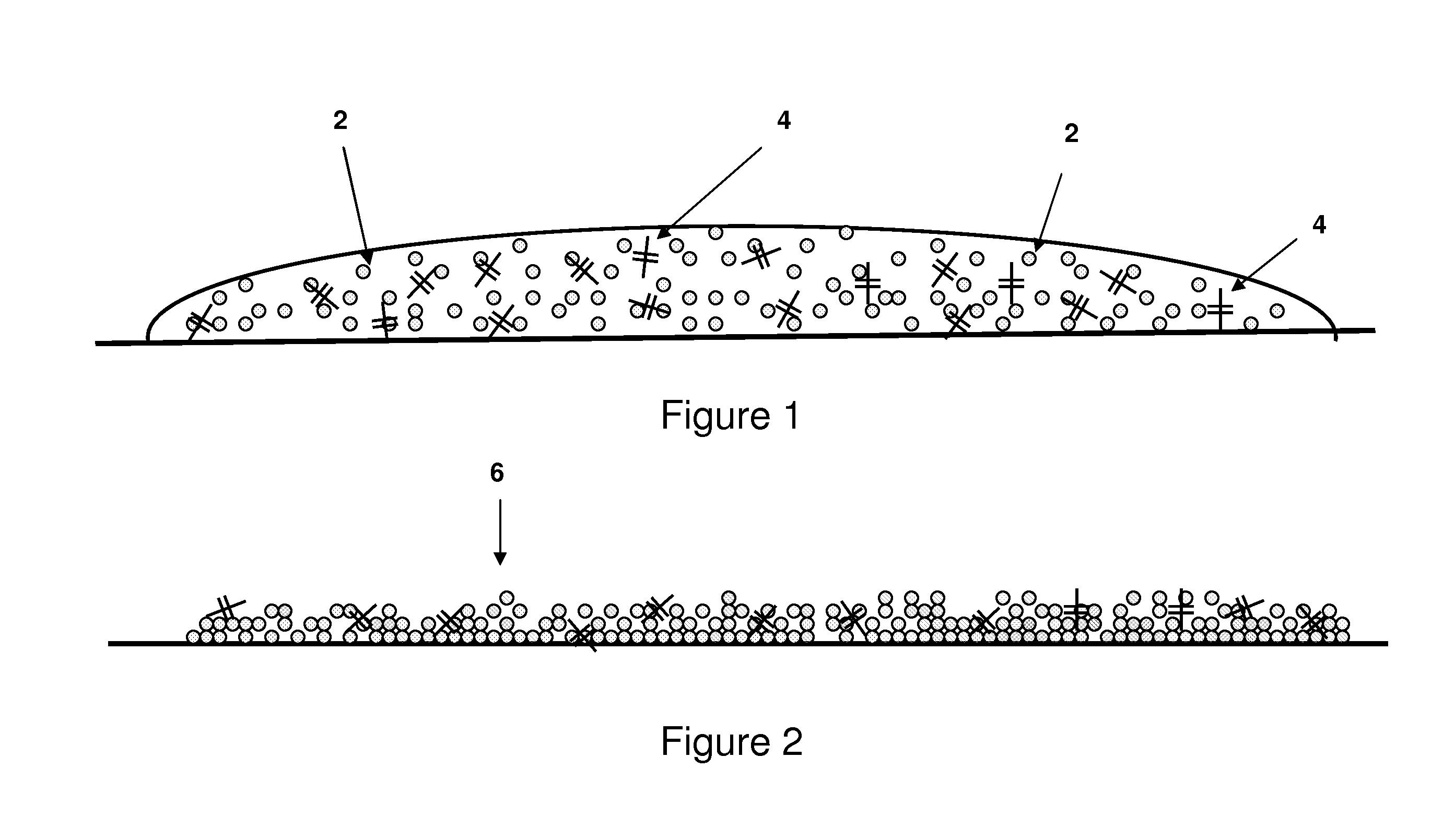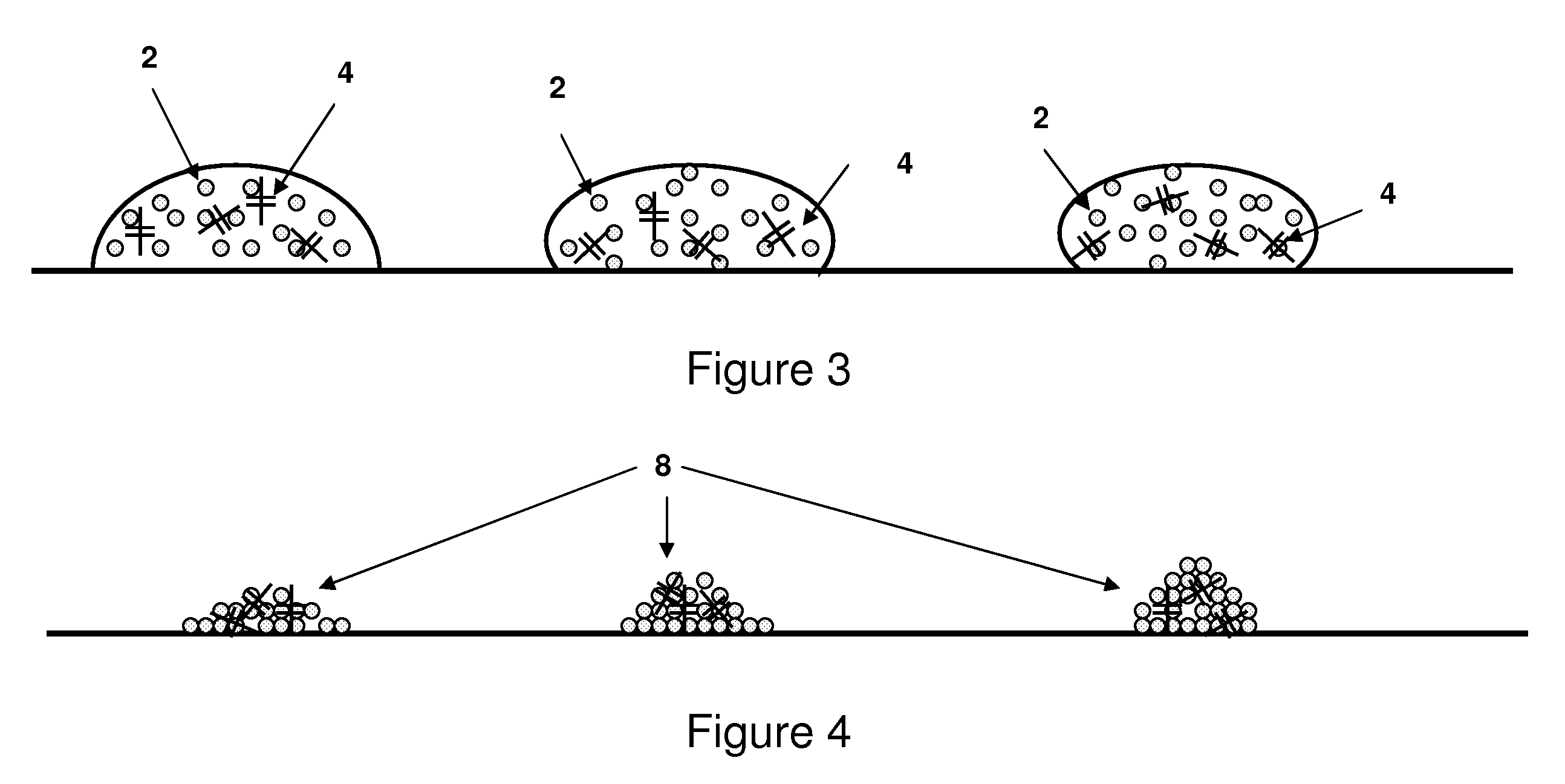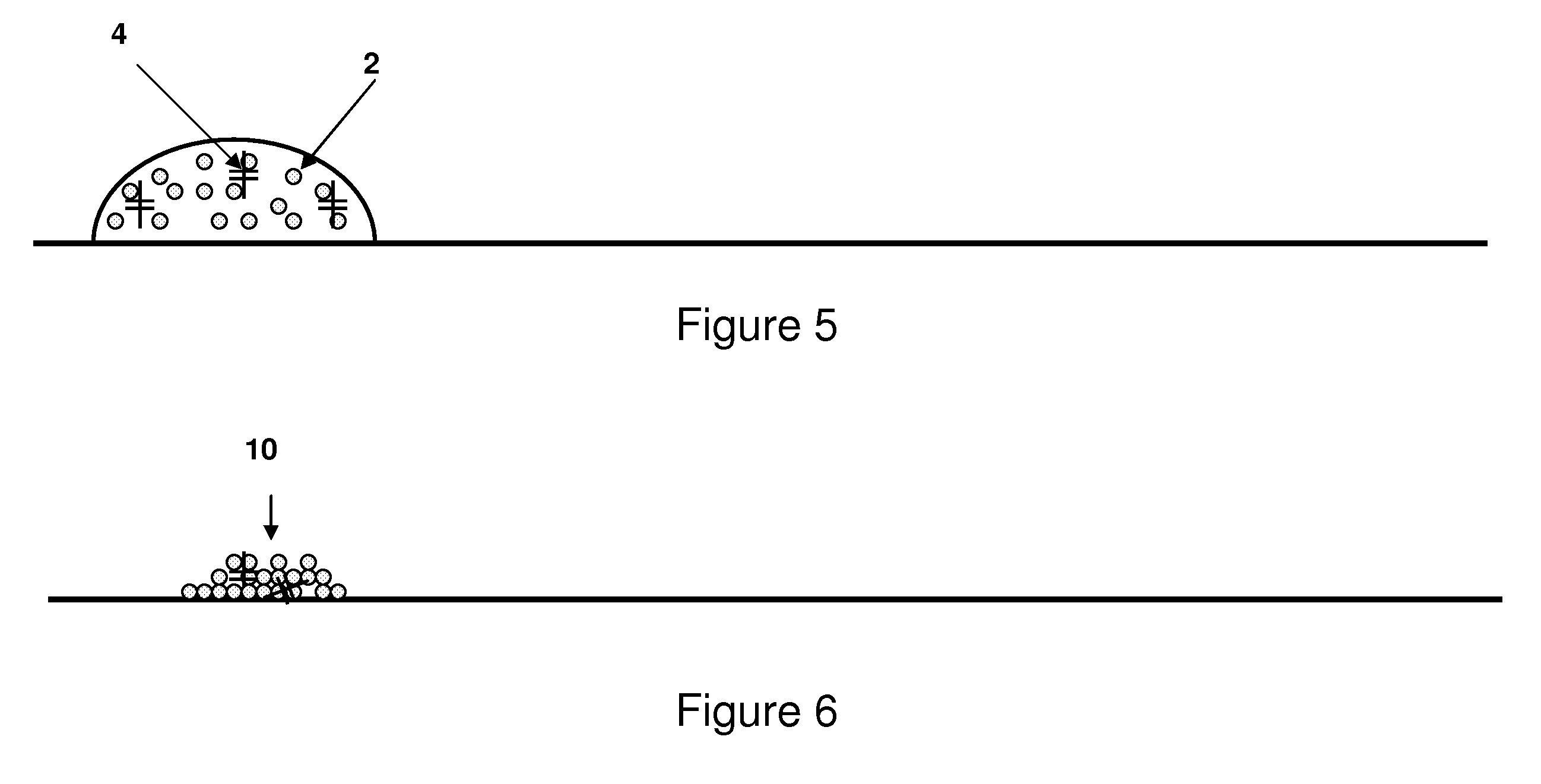Volumizing agents
a technology of volumizing agents and adsorption agents, which is applied in the field of volumizing agents, can solve the problems of reducing the proper coverage, so as to increase the friability of the particle film, the effect of maximizing the height of the deposition
- Summary
- Abstract
- Description
- Claims
- Application Information
AI Technical Summary
Benefits of technology
Problems solved by technology
Method used
Image
Examples
##ventive example 1
Inventive Example 1
[0124]A composition was formed by combining hydrous kaolin with a volumizing agent that does not spread on hydrophobic surfaces. The volumizing agent used was a cationic polymer of polydiallyldimethylammonium chloride in an amount of 2.5% of a 20% solution. The composition was applied to a Red Delicious apple and tomato leaf.
[0125]A photograph of the resulting apple and tomato leaves is shown as FIG. 11. Deposition is extremely spotty on the apple and uniform and heavy on the tomato leaves.
##ventive example 2
Inventive Example 2
[0126]A composition was formed by combining hydrous kaolin with a volumizing agent that does not spread on hydrophobic surfaces. The volumizing agent used was hydroxylethyl cellulose in an amount of 0.35%. The composition was applied to a Red Delicious apple and tomato leaf.
[0127]A photograph of the resulting apple and tomato leaf is shown as FIG. 12. Deposition is uneven, irregular, and blotchy on the apple and uniform and heavy on the tomato leaves.
##ventive example 3
Inventive Example 3
[0128]A composition was formed by combining hydrous kaolin with a volumizing agent that does not spread on hydrophobic surfaces. The volumizing agent used was carboxy methyl cellulose and in an amount of 0.35%. The composition was applied to a Red Delicious apple and tomato leaves.
[0129]A photograph of the resulting apple and tomato leaf is shown as FIG. 13. Deposition is spotty on the apple and adequate on the tomato leaves.
PUM
| Property | Measurement | Unit |
|---|---|---|
| thickness | aaaaa | aaaaa |
| particle size | aaaaa | aaaaa |
| contact angle | aaaaa | aaaaa |
Abstract
Description
Claims
Application Information
 Login to View More
Login to View More - R&D
- Intellectual Property
- Life Sciences
- Materials
- Tech Scout
- Unparalleled Data Quality
- Higher Quality Content
- 60% Fewer Hallucinations
Browse by: Latest US Patents, China's latest patents, Technical Efficacy Thesaurus, Application Domain, Technology Topic, Popular Technical Reports.
© 2025 PatSnap. All rights reserved.Legal|Privacy policy|Modern Slavery Act Transparency Statement|Sitemap|About US| Contact US: help@patsnap.com



